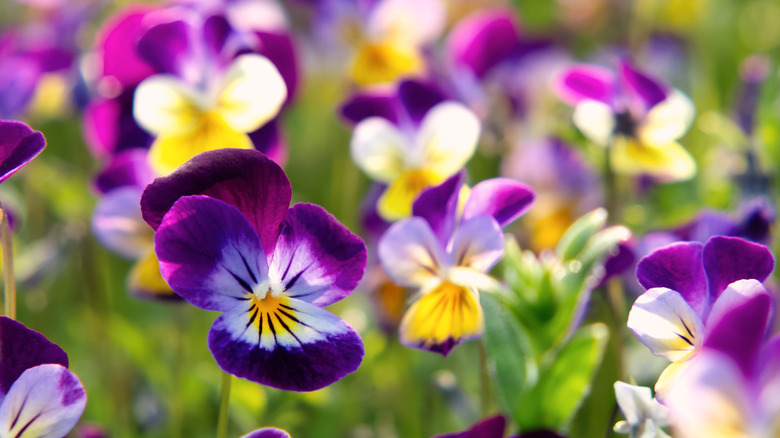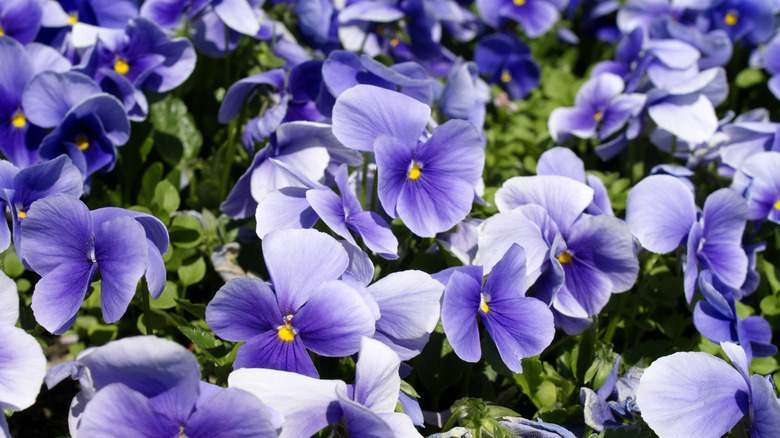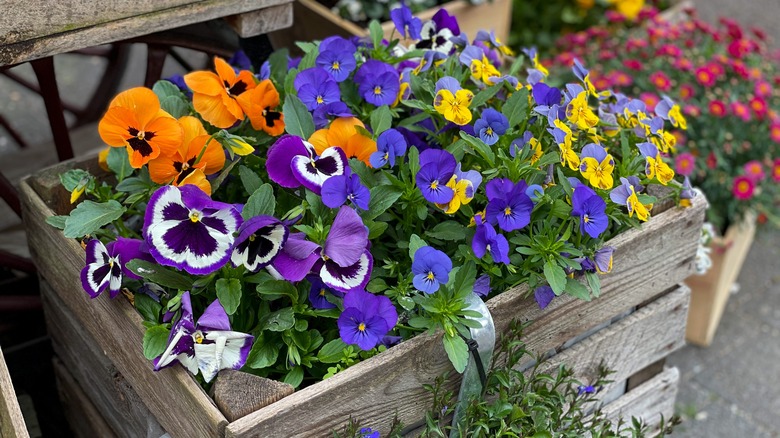The Devilish Sounding Flower You Can Plant As A Gorgeous Grass Alternative
As common as it is, grass can be a resource-heavy plant. Between irrigation systems, grass seeding, and weekly lawn mowing, there's quite a bit of maintenance that goes into ensuring your yard stays healthy and well-manicured. Sodding can also be a pricey investment, with the estimated national average cost for sod installation in 2024 falling between $1,048 and $2,992. Of course, the size of your lawn plays a role in the amount of time you spend on general upkeep, but all in all, grass feels like hard work.
Good thing there's a low-maintenance alternative in ground cover plants. Like their name suggests, ground cover plants cover the soil similarly to grass, but they're a much more ecologically sound choice. This is especially true in states that are prone to droughts, such as California, Colorado, New Mexico, and Florida. In addition to diversifying the plant life in your neighborhood, ground cover plants work well in lawns that require erosion protection.
While there are a variety of ground cover plants you can grow instead of grass, experts like one that has a devilish-sounding name — the horned violet — for its versatility. Not only can the horned violet be used for ground cover, it also does well in beds, borders, and boulders (think rock gardens). Its hardiness makes it an ideal choice for any homeowner who's tired of watching their grass die, but who still wants to maintain curbside appeal.
Tips for caring for your horned violets
You don't need to have a green thumb to care for the horned violet, but gardening experts agree that there are a few tips you should keep in mind for best results.The horned violet is technically a member of the pansy family, making it a perennial, so there's no need to re-plant it every year. With its brightly colored blossoms that come in a variety of colors, ranging from purple to red, it's also one of the showier ground cover plants.
Though the horned violet will grow in full sun, it will do better and bloom longer in partial shade. The pansy is a plant built to withstand cold temperatures (even snow!) and consequently, it doesn't love high summer heat. Odds are it won't be blooming in August. Plant it in the spring or fall when the temperatures are a bit cooler, in well-draining soils so that the roots don't become waterlogged. You can encourage maximum growth by deadheading (aka snipping away any dead blooms), which will make room for new flowers.
A word of caution: planting your horned violets in partial shade may attract insects. Snail pellets or slug bait are a good option to keep the mollusks at bay. In the case of an aphid infestation, knock the small pests off the plants with water and apply insecticidal soap or horticultural oil.
Other ways to grow horned violets
You may already have a yard full of sod, but like the idea of incorporating a hardy, low-maintenance plant. The good news is that, while horned violets work well as ground cover for your lawn, they also look beautiful in window boxes and flower beds. When starting from a seed form, gardeners recommend that you plant the horned violet directly in the garden only if you live somewhere with a long growing season.
If this is you, start by prepping the soil with a fertilizer — pansies typically like mushroom fertilizer — and dig small holes about six inches apart. Cover with approximately ¼ inches of dirt, give them some water, wait about 12-14 weeks, and you'll have horned violets in your yard. But if you live in New England, or somewhere with a shorter growing season, you're likely better suited to growing the seeds in pots indoors. Cover your seeds completely during the germination process (about 10-14 days) and move them into the light after they sprout.
Whether in a window box or a pot, it's a good idea to repot your horned violets every two years so that they don't outgrow the space. And, because the horned violet typically likes cooler weather, it will thrive in your window box during the fall and spring seasons. This may give you the option to change out your display seasonally. Pro tip: Match the violets' bold color with some of the best flowering plants for your window boxes, like geraniums, zinnias, and verbena.


